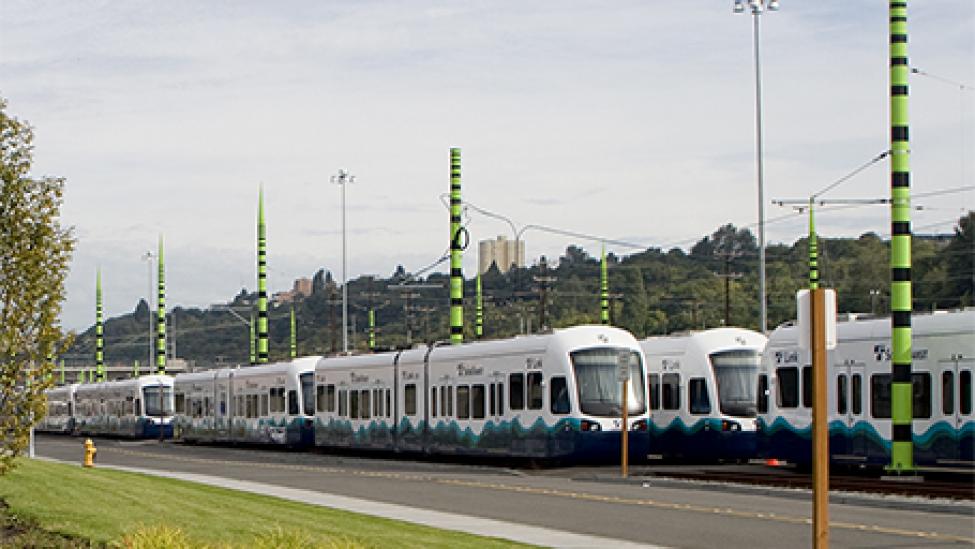
Sound Transit response to State Senate inquiry
By Peter Rogoff, Sound Transit CEO
On September 26 and October 5, the State Senate’s Law and Justice Committee will be holding public work sessions to “investigate” Sound Transit’s conduct leading up to the voter-approved Sound Transit 3 ballot measure last November. The hearings will include review of a number of assertions that agency critics have raised before, most of which have been formally dismissed. Whether you’re a voter in the Sound Transit district, a rider of our services or both, you deserve to hear the facts.
In the goal of full transparency, Sound Transit prepared this extensive memo responding to likely Committee assertions as well as a detailed chronology leading to the Legislature’s vote to authorize Sound Transit to seek voter approval of specific tax increases. Below is a summary of that information.
Members of the Senate’s Majority Coalition Caucus have asserted that Sound Transit somehow deceived legislators and the public both on the scale of the ST3 ballot measure and on the depreciation schedule used to levy the Motor Vehicle Excise Tax (MVET). Both assertions are untrue.
ST3 Revenue Package Size
In 2014 the Sound Transit Board asked for, and in 2015 the Legislature and Governor authorized, three tax sources to fund a ballot measure, the content and size of which would be shaped through extensive public input. The Legislature did not include caps or sunset clauses on the revenue authority. Initial discussion focused on a potential 15-year program similar to Sound Transit 2, under which the requested tax sources would generate up to $15 billion in new taxes.
After almost two years of public engagement, the Board responded demands for a more ambitious $53.8 billion proposal that would build a complete mass transit system over 25 years. It is important to note that of this $53.8 billion, only $28 billion would come from new ST3 taxes authorized by the Legislature, with the balance coming from existing taxes, bonds, fares, and expected federal grants. This rate of taxation is the same as that discussed for the hypothetical 15-year measure, just extended another 10 years. After these tax sources were authorized by the Legislature, there was a vigorous and transparent public debate about the size of the measure, with widespread appeals for a longer program to allow key priorities, such as extending light rail to Everett, Tacoma, Ballard, West Seattle, Redmond, Issaquah and South Kirkland to be achieved.
Following extensive public debate and media coverage probing all aspects of the plan and its funding, voters approved ST3 by a 107,000-vote margin last November.
The Washington Public Disclosure Commission (PDC) investigated allegations that Sound Transit “deceived legislators into believing Sound Transit was asking for only $15 billion in new taxing authority,” and the PDC’s report to the Attorney General found that, “No evidence was found that members of Sound Transit staff or its contracted lobbyists deceived or attempted to deceive any legislator regarding any aspect of Sound Transit 3.”
Motor Vehicle Excise Tax (MVET) Depreciation Schedule
The expanded MVET authority adopted by the Legislature used the same depreciation schedule for vehicle valuation that has been in place since the 1990s. The legislation explicitly required that this schedule be used for ST3 until bonds that the agency issued in 1999 are retired in 2028, consistent with pledges to bondholders. After 2028, collections will switch to a newer depreciation schedule created by the Legislature in 2006 for the Regional Transportation Investment District (RTID) authority, although this schedule has never been used due to the failure of the RTID ballot measure. Certain legislators have stated they thought the 2006 schedule would be used, even as the legislative language clearly directed otherwise. Amendments calling for the 2006 schedule were openly debated and formally rejected in both the Senate and House.
Delivering Voter-Approved Projects
At Sound Transit we are working hard every day to deliver the transit alternatives approved by voters in 2008 and 2016: a light rail network spanning 83 stations, bus rapid transit on I-405 and SR 522, more Sounder service and additional investments to increase mobility and to serve ever-increasing ridership throughout the region. To be successful in these endeavors, we need strong partnerships with federal, state and local governments. Baseless assertions do not move our region forward.